In April 1902 the Great Lakes Coal Company, led by industrialist Emmet Queen, was incorporated in Pittsburgh, Pennsylvania. The new company had acquired over 25,000 acres of bituminous coal-bearing property in Butler and Armstrong Counties in Western Pennsylvania. The company immediately began seeking to open a direct route to transport its shipments of coal to the port facilities on Lake Erie.
The company gained access to an existing stretch of twenty-one miles of track – part of the Bessemer & Lake Erie Railroad (B&LE) – from Brady’s Bend Township in Armstrong County to Queen’s Junction in Butler County, and decided to extend this line another twenty-eight miles west to New Castle. The steam-powered railway, to be known as the Western Allegheny Railroad (WA), would eventually total about forty-nine miles in length with another twenty miles of sidings and yard tracks. Under an agreement the B&LE would manage the new railway, although it would remain a separate entity under the Great Lakes Coal Company.
The Buffalo, Rochester & Pittsburgh Railroad (BR&P), under various agreements to utilize tracks and facilities owned by the Baltimore & Ohio Railroad (B&O), had planned to build a direct route from New Castle to Butler but it never fully materialized. The plan resulted in the Big Run Branch, a short stretch of track from New Castle Junction to the various industries in the general area of Cascade Street-Butler Avenue-Countyline Road.
The New Castle Herald of Wednesday, November 5, 1902, reported, “Still another railroad is headed for New Castle, according to the Pittsburgh Dispatch. It is the Western Allegheny, which will start at Brady’s Bend and have this city as its Western terminus, and will probably become a link of the Pennsylvania. According to the Dispatch, Guffey & Queen, associated with the old Carnegie interests, have formed the Great Lakes Coal Company, with a capital of $5,000,000, have acquired 25,000 acres of coal land at Brady’s Bend, and will enter the coal trade on a large scale.”
Railroad agents were sent out to secure right-a-ways across the various properties in Butler and Lawrence Counties where the line would have to transverse to reach New Castle. It took a few years but the New Castle Herald of Tuesday, March 28, 1905, mentioned, “The first construction contract to be let in the building of the extension of the Western Allegheny railroad from Butler to New Castle has been let to the S. A. Masselli & Company, Pittsburg. The contract calls for 15 miles of the heaviest work on the entire line… There remains about 14 miles of track to be let.” Construction crews commenced with actual work along the line in April 1905.
The railroad paid well for the right-a-ways, but in some cases had to use condemnation proceedings when landowners refused to sale. Numerous lawsuits also resulted when landowners claimed their rights were violated or physical property was damaged when the railroad was constructed.
The elderly Michael Hartzell, who owned ninety-seven acres of farmland in Shenango Township, was one such landowner. He filed a lawsuit against the WA in the summer of 1905 seeking $3,000 for damages done to his property. In January 1907 the oft-delayed case went to a jury trial and resulted in a $350 award to Hartzell. He was unhappy and immediately filed an application for a new trial. A second trial was held in April 1908 and resulted in an award of $442.50. Both sides were still displeased and the railroad officials sought a new trial. Eventually, just minutes before the case was set to be tried before another jury in April 1909, the two sides reached an agreement that settled the matter. (NOTE: Hartzell passed away in May 1910 at the age of sixty-nine. He was laid to rest in Greenwood Cemetery in New Castle.)
The most substantial physical barrier preventing the WA from reaching New Castle was the deep gorge of the Slippery Rock Creek. Work slowly progressed on a towering wooden trestle over the Slippery Rock, located just north of the village of Rose Point, commenced in the fall of 1905. The New Castle Herald of Tuesday, May 8, 1906, reported, “Work on the Western Allegheny bridge over the Slipperyrock at Rose Point is nearing completion and it will be but a short time before trains will be running over the big structure… The bridge is being built by non union structural iron workers in the employe of the American Bridge company. Many of these men are unskilled and this accounts for the long time taken to complete the work. The bridge is about 100 feet high.” The bridge was soon completed and opened to trains – which carried construction equipment and materials westward – in late May 1906.
It was soon evident there were two common themes with the WA: company officials were very secretive about their inner workings and the railroad was being built despite many crucial agreements had yet to be worked out.
Just who exactly owned and controlled the WA was a matter of speculation for quite some time. The New Castle Herald of Saturday, July 21, 1906, reported, “Several days ago the Pittsburg Post stated the Pennsy (Pennsylvania Railroad) was the owner of the Western Allegheny. Today, the post asserts the road being built from East Brady to New Castle is owned by the Bessemer and Lake Erie. The Post says: That the Bessemer & Lake Erie will eventually own the Western Allegheny railroad, bring built from East Brady to New Castle, is generally believed by well-informed railroad officials, despite the fact that officials of both roads deny that any such deal has ever been opened.” The same article mentioned that the BR&P had previously attempted to acquire the new railroad but met with no success.
The WA had secured a route to the area near Cascade Park, but never obtained a clear path into the heart of New Castle. The New Castle Herald of Tuesday, January 9, 1906, mentioned this fact with, “The principal topic in railroad circles at the present time is “How will the Western Allegheny gain entrance into New Castle?” Many suggestions have been made as to a possible entrance but as the officials have announced no facts concerning entrance, the affair is shrouded in deep mystery.” One rumor indicated that the WA would connect with the Big Run Branch of the BR&P near Cascade Park, and then travel that winding route to New Castle Junction. That rumor proved to be false.
By September 1906 the WA reached the Butler Road (now the Old Butler Road) on the outskirts of New Castle. A temporary terminal was established alongside the BR&P tracks at what soon became known as the AWWA Junction. (NOTE: AWWA takes its name from the Allegheny & Western Railroad (AW), essentially a construction company that surveyed and built the Big Run Branch, and the Western Allegheny (WA).) The first freight trains began service from Butler to AWWA Junction in September 1906. The line was extended a short distance down to the New Castle-Ellwood Road in East New Castle (also known as Pumpkintown or Joyce) about a month later.
Passenger service between East New Castle and Butler commenced on Monday, December 10, 1906. Small passenger stations were soon established along the route at such places as Gibsondale, Princeton, and Rose Point in Slippery Rock Township, and Grant City, Portersville, Nealey, and Isle (Prospect) in nearby Butler County. Farmers used the route to take their crops to markets in New Castle, while bird hunters from Lawrence County, along with their dogs, would often ride these trains out to the more distant game lands in Butler County.
The New Castle Herald of Wednesday, December 12, 1906, reported, “After two years of mysterious work, during which time no information whatsoever was given out concerning the route, the Western Allegheny Railroad Company, a subsidiary line of the Bessemer & Lake Erie has been thrown open to passenger traffic between New Castle and Queens Junction. The first train was operated between these two points a day or so ago. The trains are operated each way daily. No terminal facilities have been made in this city, but a hack line is being run from East New Castle to Awwa Junction, to connect with the trains… Two trains leave Awwa Junction each day for Butler and other points on the main line of the Bessemer.”
The same article went on to elaborate on the fact that the WA still had no access route to reach into New Castle. It mentioned, “No entrance has been secured to the city yet. The road is completed to a point a short distance south of Awwa Junction. Men are now at work rushing the road south. It is the intention to build in a southern direction to West Pittsburg and there obtain the traffic from that city. Then a spur can be built north to New Castle Junction and connections can be made with the B. & O., Pennsylvania or Lake Erie for entrance to this city… One thing is certain and that is the B. R. & P. will not be used by the W. & A. to get into New Castle.”
Whether or not the officials of the BR&P were amicable towards an agreement with the WA really didn’t matter, because the BR&P leased its track rights in the area from the powerful B&O. The B&O was not going to allow another railroad to easily encroach upon its valued territory. The B&O was bitter because the WA, with its direct route, was taking away many patrons who previously traveled on the B&O’s much longer Butler-Eidenau-Ellwood City-New Castle route.
The New Castle Herald of Thursday, June 27, 1907, reported, “There is a livery war on between the Baltimore & Ohio and the Western Allegheny for business into this city from Butler. Yesterday the former road refused to allow the Buffalo, Rochester & Pittsburg to permit the Western Allegheny to use its tracks from East New Castle to Cascade Park in getting the Butler crowd to the resort and a thousand or more were obliged to walk from Pumpkintown to the park. It was intended that the W. A. would carry the excursion to East New Castle and that train would be run direct to the park gate. The B. & O. said “No,” however, and the B. R. & P. tracks were not used.”
The management arrangement with the B&LE was soon dissolved as the New Castle Herald of Thursday, November 14, 1907, disclosed, “The Western Allegheny railroad, extending from Brady’s Bend to East New Castle, has been dropped by the Bessemer & Lake Erie Railroad company. The little road, for the past fourteen days, has been in operation under the direct rule of Emett Quenn (sic), a Pittsburg capitalist. The Bessemer has had nothing to do with it since November 1, when Superintendent H. S. Bickle was appointed by Mr. Quenn to supervise the entire road… The little road is placed in a peculiar predicament through its abandonment by the Bessemer. Expecting for three or four passenger and two freight locomotives and road is absolutely with rolling stock. Freight cars have been leased… The reason for the Bessemer’s sudden action, cannot be determined but it is presumed it was because of failure to obtain satisfactory terminal facilities in this city.”
In late 1907 the WA, with plans to extend the line from East New Castle to the B&O rail yards at West Pittsburg, began surveying the route. The project was delayed for long stretches and the work was finally completed in early 1911. Once again the WA met a stone wall. The WA was unable to secure an agreement to connect with the rival B&O. WA officials soon went to court to attempt to get an injunction against that railroad. The New Castle Herald of Friday, March 17, 1911, reported, “The Western Allegheny has been unable to get a connection with the Baltimore & Ohio through any kind of an amicable agreement and that was why the petition in the matter was presented to court. The tracks are close to each other at West Pittsburg and the work of joining them will be small. The connections will be of great advantage to the Western Allegheny.”
Lawrence County Judge William E. Porter soon ruled in favor of the WA and indicated the connection would be good for the local economy. The B&O filed various appeals and the case was eventually taken up by the Supreme Court of Pennsylvania. The high court issued a ruling in early January 1912 that essentially upheld the ruling of Judge Porter. The WA finally had a route into New Castle and immediately began efforts to build connection tracks.
The New Castle News of Friday, January 12, 1912, reported, “Connections between the Western Allegheny railroad and the Baltimore and Ohio road at West Pittsburg is being made by a force of men put to work this morning. The junction of the two roads will have an important bearing on New Castle’s commercial and manufacturing interests, as it will allow the Western Allegheny to ship coal directly to this city from the mines at Kaylor, Armstrong county… Some efforts were made to arrange a connection with the Baltimore & Ohio at West Pittsburg but the officials of that road objected. The case was carried into the local courts and Jude Porter appointed viewers. These viewers reported favorably for the connection at West Pittsburg. Objections to the report were made but Judge Porter sustained the report and was in turn sustained by a supreme court decision which was handed down a few days ago.”
The B&O, suffering a bitter defeat, was forced to allow a connection to its line, but still controlled the flow of traffic along the tracks in West Pittsburg. It was thought that the B&O might be difficult and attempt to limit or even exclude WA traffic. Numerous newspaper reports suggest another nasty legal battle was looming, but it appears everything was worked out and quieted down.
The Great Lakes Coal Company (and the associated WA) was soon faced with financial crisis and went into receivership in August 1912. The Great Lakes Coal Company was reorganized under new leadership and emerged from legal limbo as the North Penn Coal Company in August 1913. The railroad continued in operation under new ownership.
The WA enjoyed decent success in the coming years. It was planned and built primarily to serve the coal industry, but the limestone mines around the Kaylor-East Brady area became major freight costumers. In particular the biggest such client was Michigan Limestone, which became a subsidiary of the U.S. Steel Corporation in 1920.
In August 1925 the mighty Pennsylvania Railroad (PRR) acquired the assets of the WA. The PRR or “Pennsy” officials had big plans for the little railroad, as they sought to modernize its operations and extend its reach to connect to other PRR routes. The PRR had an optimistic outlook for the WA, but those plans were permanently shelved during the tough times of the Great Depression. During the early 1930’s the PRR actually began phasing out operations along the route and all passenger service was discontinued by February 1932. Freight service continued as a reduced capacity.
In the spring of 1938 the officials of the WA began asking the Interstate Commerce Commission (ICC) for permission to abandon the line between Queens Junction and West Pittsburg. It took a year but in early April 1939 it was announced that the WA would cease all operations on that stretch of track on May 10, 1939. An article in the New Castle News of April 21, 1939, mentions that the WA mainline was officially authorized for closure, but would be delayed due to, “…the building of the new three lane highway between Portersville and Route 19 and 422 Intersection, material for which are being shipped via the Western Allegheny Railroad, it is reported that the operation of the railroad between Queens Junction and West Pittsburg will continue until the end of that project.”
The same article, which provided a bit of history of the WA, stated that, “About twenty years ago, there was located on this piece of track, about twenty coal mines, most of which were in Butler County, that made large shipments of coal. None of these mines is now in operation. In 1917, the road was loading 40 to 50 cars of coal, and 80 to 100 cars of limestone per day. In the same year, two passenger trains, each way, plied daily between New Castle and Kaylor. At the present time, locally, the Western Allegheny Railroad handles shipments to several gasoline companies, and a few coal yards, in East New Castle, and shipments from Rose Point Stone and Lime Company.”
The twenty-eight-mile WA route between the B&LE connection at Queens Junction and the B&O connection at West Pittsburg was essentially shutdown on Saturday, September 16, 1939. The original mainline from Queens Junction eastward to East Brady, twenty-one miles in length, remained in operation at a reduced capacity – eventually being cut short in the east at Kaylor. The last steam locomotive was retired in 1957 making the WA the last steam-powered railway in operation in the area. Diesel locomotives ruled the day from then on.
In January 1968 the B&LE purchased the remaining WA assets from the PRR and merged them into the B&LE. It was the B&LE that originally ran the operations of the WA in its early days. It’s safe to say this officially ended the WA’s existence as its remaining locomotives were soon rebranded with B&LE paint schemes and logos. The B&LE continued to run coal-hauling trains – some powered by the distinctive “bulldog-nosed” EMD F7 locomotives so popular with rail enthusiasts – along stretches of what is often called the Kaylor Branch.
Coal operations actually increased during the 1970’s and held fairly steady into the 1980’s. The last train was run along the line in early November 1994. In March 1995 the B&LE filed an application with the ICC requesting to officially abandon and discontinue service on the line. This request was apparently granted sometime in 1996.
There was apparently no agreement (or no evidence was located) that the right-of-ways would revert to the original owners once the railroad ended service. Numerous newspaper articles reveal that the WA sold off most of its right-a-ways and associated properties located within Lawrence County during the 1940’s.
In 2000, the approximately eighty property owners affected in Butler County formed an association, pooled their funds, and hired a legal team. They were eventually able to reclaim and purchase the old WA right-of-ways for a total of $290,000. I assume the small number of affected property owners in Armstrong County were able to secure similar arrangements?
The WA tracks, gravel beds, and passenger stations were torn up or razed and few remains of the railway can be found today. If you take a look at a satellite map on the internet you can easily find traces of the abandoned railroad beds in Lawrence County. You can pick up the bed just north of the intersection of Routes 65 and 422 (near Willowbrook Road) in Shenango Township. Follow it as it arches up and travels below Frew Mill Road, crosses Route 388 near Birdhouse Lane, Copper Road and Cow Path Lane close to Frew Mill Road, Mt. Hermon Church Road, Princeton Station Road, and banks southwest towards the Muddy Creek Valley. The old wooden trestle at Rose Point is gone, but its main pier still sits in the Slippery Rock Creek near Clair Drive. Afterwards, follow along as the bed crosses Route 19, angles down and just under Cooper’s Lake, banks sharply south and crosses Route 79, and heads due east buried under Lake Arthur. The railroad headed east (across the lake) until it passed the Route 528 bridge, where it banked sharply north for a short stretch before turning east along Muddy Creek. You can pick it up on a map again just south of Burton Road as it near Queens Junction and zig-zags its way towards Kaylor-East Brady.
The Western Allegheny was a small enterprise compared to most railways, but it served its purpose as a coal and limestone hauler and was a valuable asset to the residents of rural eastern Lawrence County and the neighboring areas in Butler County.
To read a short blurb from June 1903 about the progress on the railway click on: PROGRESS ARTICLE. To read an article how the railway came under the management of the B&LE in late 1903 click on: B&LE MANAGEMENT ARTICLE. To read a January 1905 article about how the railway will extend into New Castle click on: NEW RAILROAD ARTICLE. To read a blurb from April 1905 about a construction company being hired for the heaviest work click on: CONSTRUCTION ARTICLE. To read a July 1905 article about what the coming of the railway meant to New Castle click on: BRANCHING OUT ARTICLE. To read a short article about the building of the rail yard in February 1906 near Cascade Park click on: RAIL YARD ARTICLE. To read about a rumored takeover of the railway by the BR&P in early 1906 click on: BR&P TAKEOVER ARTICLE. To read an article announcing that the BL&E took over control of the railway in October 1906 click on: B&LE TAKES CONTROL ARTICLE. To read articles from December 1906 about how the residents of Prospect made a case for the name of the local station to be changed from Isle to Prospect and how the railway carried its first passenger click on: ISLE STATION ARTICLE and FIRST PASSENGER ARTICLE. To read an article about the railway extending down to West Pittsburg in November 1907 click on: WEST PITTSBURG EXTENSION ARTICLE. To read about the opening of the Princeton station in December 1908 click on: PRINCETON STATION ARTICLE. To read about how in November 1910 Catherine Weinschenk was awarded damages in a bitter dispute against the railway click on: WEINSCHENK VERDICT ARTICLE. To read about how the railway decided to build an extension to Rose Point in August 1911 click on: ROSE POINT ARTICLE. To read an October 1915 article about how hunters often jumped the railway to hunt birds in Butler County click on: BIRD HUNTING ARTICLE. To read about how the railway was transferred to the PRR in August 1925 click on: 1925 TRANSFER ARTICLE. To see a Western Allegheny Time Table from 1927 – generously provided by local train enthusiast Wayne Cole – click on: 1927 TIME TABLE.
 The Western Allegheny Railroad, a coal and limestone hauler with limited passenger service, was completely opened between Queens Junction and New Castle in October 1906. A Western Allegheny locomotive and two cars cross the high trestle, which was over 500 feet long, across the Slippery Rock Creek near Rose Point. (c1909) Full Size |
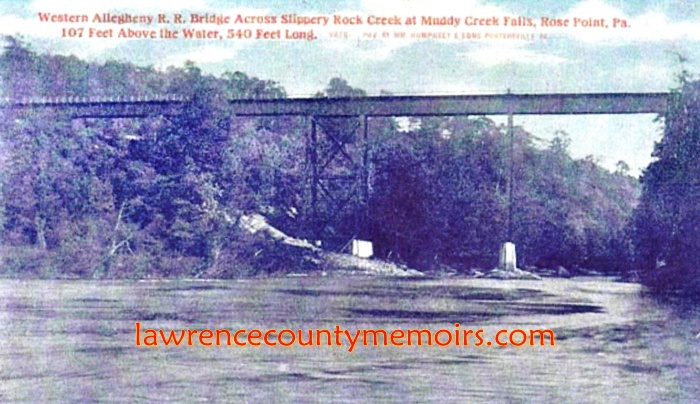 The most substantial physical barrier preventing the Western Allegheny from reaching New Castle was the deep gorge of the Slippery Rock Creek. Work on this high trestle near Rose Point began in the fall of 1905 and progressed quite slowly. It was finally opened to trains in late May 1906. (c1915) Full Size |
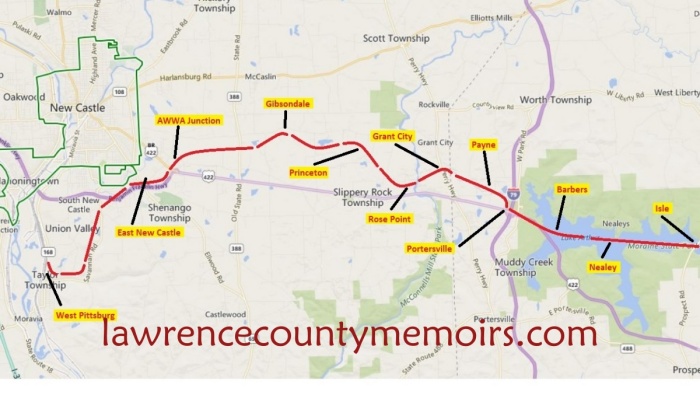 This map reveals the general route of the Western Allegheny Railroad as it travels across Lawrence County to West Pittsburg. The train stations, although not all were in operation for the same years, are marked in the yellow boxes. Most would have been known by “station”… i.e. Princeton Station, Payne Station, Portersville Station, etc… You might notice that most of these rural stations were close by not actually in the communities they are named for. Full Size |
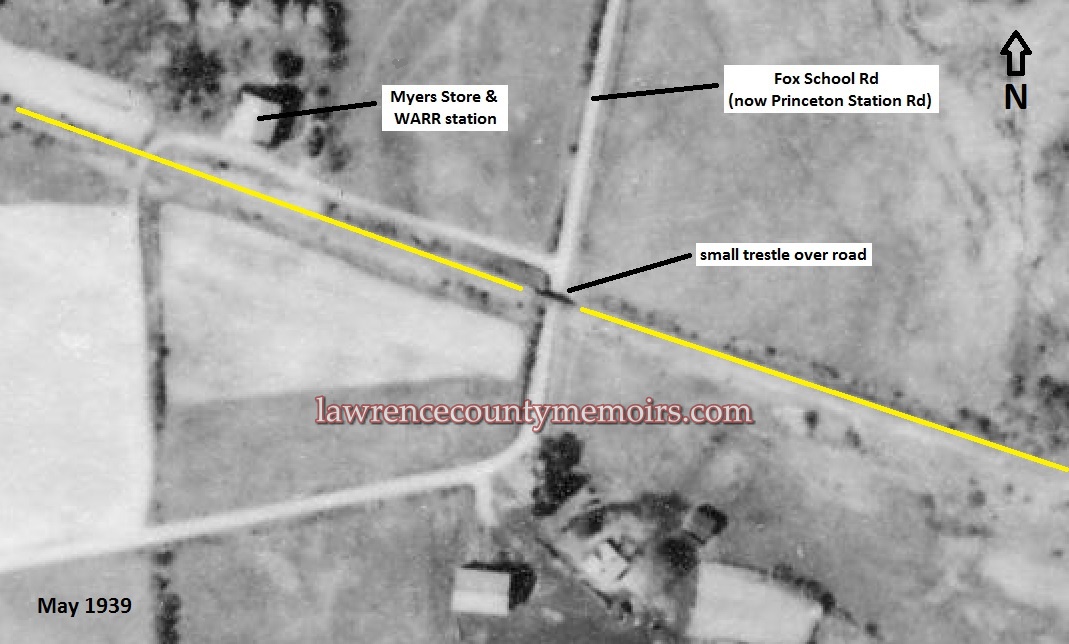 The WARR had various small trestles over its route. The yellow line reveals the WARR route as its crosses Fox School Road (now Princeton Station Road) in Slippery Rock Township. (1939) |
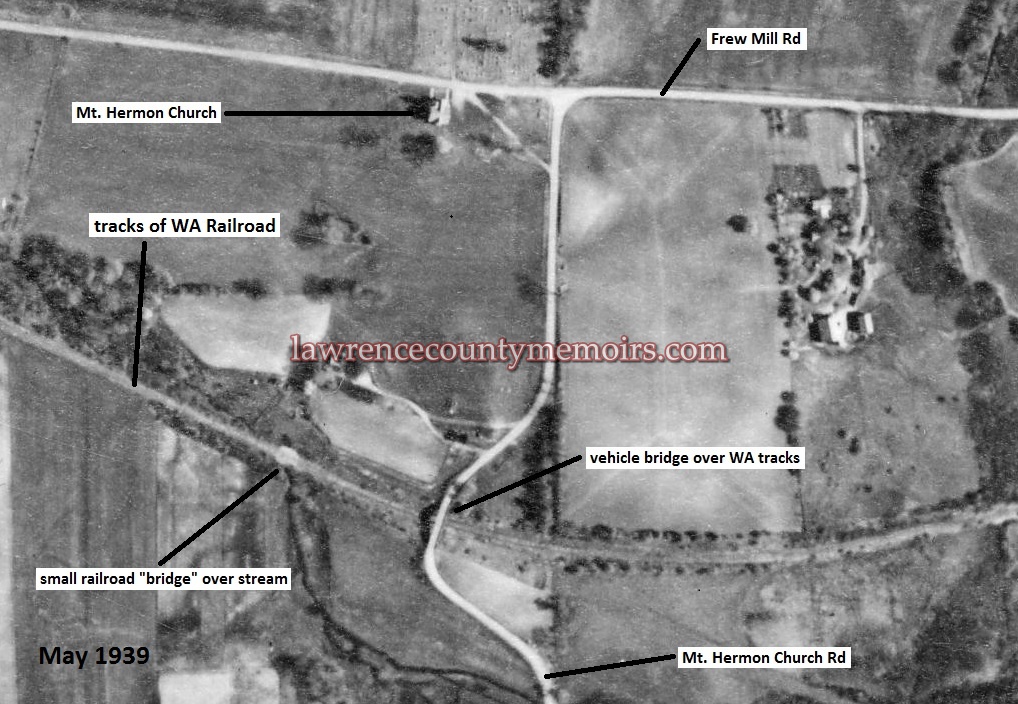 Traffic along Mt. Hermon Church Road in Slippery Rock Township was once carried over the WARR tracks by a small bridge. (1939) |
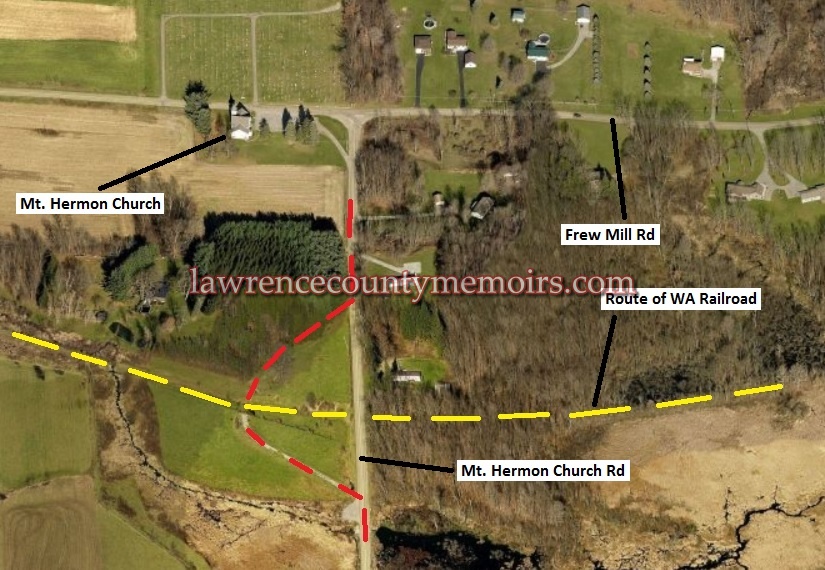 This modern overhead view shows the former location (marked in red) of the vehicle bridge along Mt. Hermon Church Road. (2015) |
 A postcard of the Western Allegheny trestle across the Slippery Rock Creek. This bridge is now gone but it sat north of the old Rose Point Bridge. |
 Another postcard of the Western Allegheny trestle across the Slippery Rock. |
 A train of the Western Allegheny in the yards at Kaylor, Pennsylvania, c1935. Full Size |
 A painting of the C. W. Myers general store and the Princeton Station stop along the Western Allegheny route. Charles W. Myers (1884-1961) and his wife, the former Daisy Shaffer (1885-1970), operated this store from the time the railroad opened in 1906 until sometime in the mid-1920’s. Charles later worked in the mills of New Castle. The store and station are now gone but were located at “the bend” on what was Fox School Road – and is now known as Princeton Station Road. (Painting courtesy of Charles Myers – via Wayne Cole) Full Size |
 The Western Allegheny passenger station in East New Castle, also known as Pumpkintown, was located near Cascade Park. Initially this was the western terminus of the line until an extension was opened down to West Pittsburg in early 1912. On modern day maps this station would have been located in the barren area about halfway between the Auto Zone on Route 65 and the Shenango Township Municipal Building. (Photo courtesy of Wayne Cole) (1939) Full Size |
 |
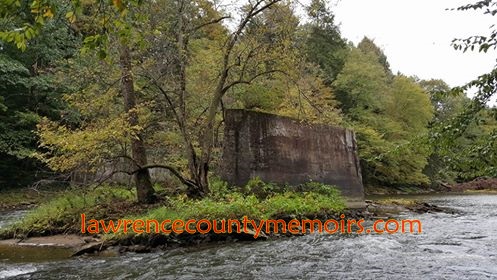 (Jan 2015) (Photo courtesy of Jason Sapienza) | 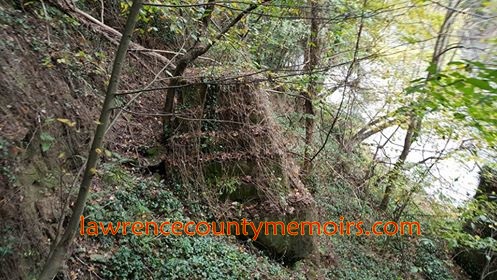 (Jan 2015) (Photo courtesy of Jason Sapienza) |




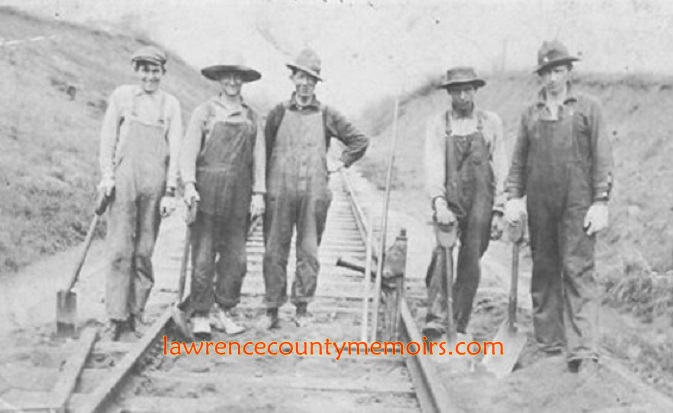


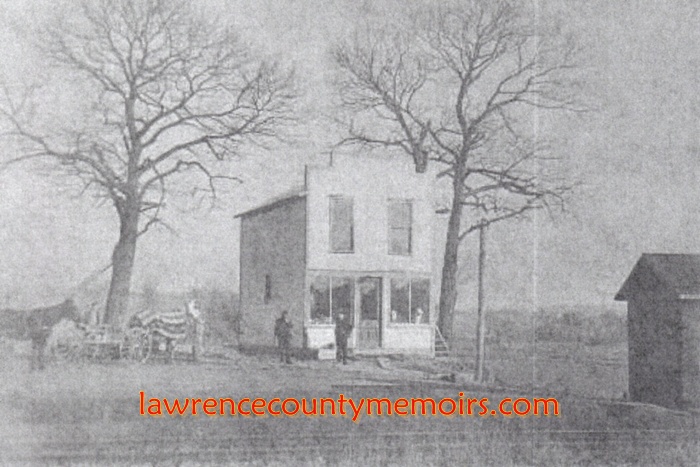

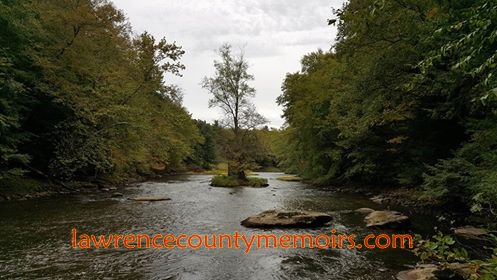
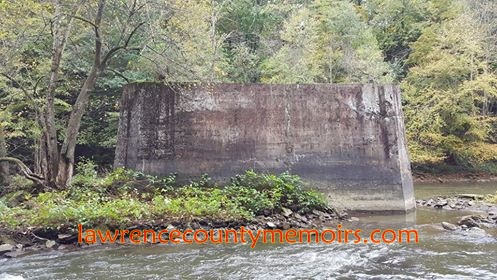
Comments
Christine Telega #
I am having trouble with the links or not seeing anywhere to click on them. I am extremeely interested in these articles, as I am trying to find information on my maternal grandfather, who worked for a railroad in the 1920’s. My mother was never sure which railroad he worked for but I would assume, since he lived in Mahoningtown, that it would be one that was based in or regularly passed through the area. I was hoping that one of the articles might give me some ideas.
Jeff Bales (editor) #
EDITOR’S NOTE – Christine. Thanks for your interest. I wanted to let you now that the articles will be posted soon. Please send me your grandfather’s full name and I’ll see what I can find for you. Thanks.
Jerry Myers #
My Great grandparents owned Princeton Station
John #
What happened to the Western Allegheny Railroad Company? Was it bought out by another company? I can’t seem to find anything on what it became. thank you for you help.
James Myers #
C.W. Myers and Daisy were my great-grandparents.
I have a correction for you.
Daisy Myers was formerly Daisy Shaffer not Daisy Frew.
Daisy Shaffer’s mother was a Frew; maybe this is where you found this name.
Thanks for the write-up; well done.
Jim
john gleghorn #
the rail beds are still visible in rose point
Anthony #
Where exactly was the stop in East New Castle and where/how did the line continue into West Pittsburgh?
Frederick A. Walden #
Condr. C.B.&Q. R.R. age 81 retired 1989 40 year,s worked as a Round house labor,swichman,brakeman.ex-night-trainmaster,ex-yardmaster,Condr. 17 years. still a member U.T.U.
Mary #
Hello,
I love the trestle photos you have here on your website! I’m wondering if you might be able to help me find a photo for a book I’m writing. I don’t know much about trains. I need a photo of a train that would carry at least some passengers in 1914 in Western Pennsylvania. I would be grateful for any assistance.
Thank you!
Mary
Brandon #
I’m looking for information about the railroad that ran thru Cascade Park from up by the pool, which looks like it used to cross Pennsylvania Avenue and possibly continued to Mahoningtown? Me and my girlfriend were out walking and stumbled across what looks like and old railroad trestle directly up the hill from where the old dam would have been. There is what appears to be two old chutes coming down the hill from the direction of the 422 bypass. Any info would be greatly appreciated.
Dave Rotthoff #
Passed under the WA on PA Rt. 38 many and many a time from about 1950 until the line closed. Don’t have the dates of the magazine articles right handy, but a good number of years ago Railroad & Railfan Magazine published a two part article titled The Kaylor Chronicles that covered the line. Somewhere in my files I have the articles filed. Might mention that there was a rarely-used connection between the WA and the B&O’s Northern Subdivision line that ran from Butler to Foxburg, where the famous two level railroad [on top] and highway bridge provided a crossing of the Allegheny River.
Carrie Cyphert #
My great grandpa, A.C. Madden was a conductor out of Kaylor.
Jimmy #
I know that there is railroad stretches mostly buried beside Kerrs trailor park by giant eagle in shenango township.it go’s all the way down past few mill road one way and the other Way it goes across the road from Kerrs trailor park (422) across the road (but obviously torn up now) and runs beside another trailor park rite beside a Lil fence that separates that park from troutman’s supply all the way to the back of the park and into the woods.. there are walking trails back there and if u walk them stay to the left and once u go far enough ull see a lot of old brick and old piles of coal and foundations to buildings that use to be there and the tracks run right next to it..if u keep following them it’ll take u right next to advanced auto.rite beside the parkin lot u will see two short little wood poles with a chain across it. I guess u could even walk from there into the woods. But anyway it follows into cascade park from there. And another part is down shenango stop road. If u look along the road you will see one side of an old rail. The other side is there just underground.. (witch obviously led into west-pittsburngh) there is property that was in use while the train was up and before that too I dont kno if they were just homes or what. But I live along some of that stretch and I have an old cellar like room made of big stone built rite into a hill.. and there are old sighns that people were there all over the place in the area along time ago. Like old poles to tie horses. And old foundations to all different things around a big area some sticking outta the ground. Ive found parts of old buggies in the ground and parts of saddles and those big round loops connected to poles that people would tie there horses too.And big metal coat buttons. It’s all rly cool.. I jus wish there were old maps that showed were all the tracks were and the old buildings and stuff that was around them.. I think it would be cool to kno..
Robert Beining #
More information is available in print. Wayne Cole has published a few Ghost Rail books. Ghost Rails II is all about the Western Allegheny Railroad. Ghost Rails IV contains information on the BR&P which ran through Cascade Park and connected to the WA rr.
Wayne Karns #
Where can I find these books?
Gary Fleeger #
The Portersville Station was not flooded by Lake Arthur. It was just downstream from the current dam, at the road crossing from US 422 to the north shore (which was just recently rebuilt/replaced). The gates of the Lake Arthur dam were closed in 1969, and the lake filled in April, 1970.
Polly Shaw #
Ghost Rails II (Western Allegheny Railroad) is housed in the Prospect Library.
David A. McCormick #
One of my maternal great-grandfaathers was a J. Scott Gibson (1856-1910), a farmer in Slippery Rock Township. He sold lands to the Western Allegheny RR. He arranged for a station stop at Gibsondale just east of the Altman post office. The railroad also erected a water tower at Gibsondale. When western end of the Western Allegheny was abandoned and scrapped during World War II, a portion of its lands in that vicinity were sold to a former Western Allegheny Railroad track foreman, William McDevitt who had a house and buildings at the locale of the Altman post office. The McDevitt property (about 4-6 acres) was somewhat triangular was bounded on the west by Copper Road, the south by the railroad grade itself, and the north by the Frew Mill Road. Mr. William McDevitt and wife, Sarah, resided there well into the 1950s. In my childhood, the McDevitts were friends of my parents and grandparents, my Mom’s parents (Mr. & Mrs. R.E.Gibson).
Comment